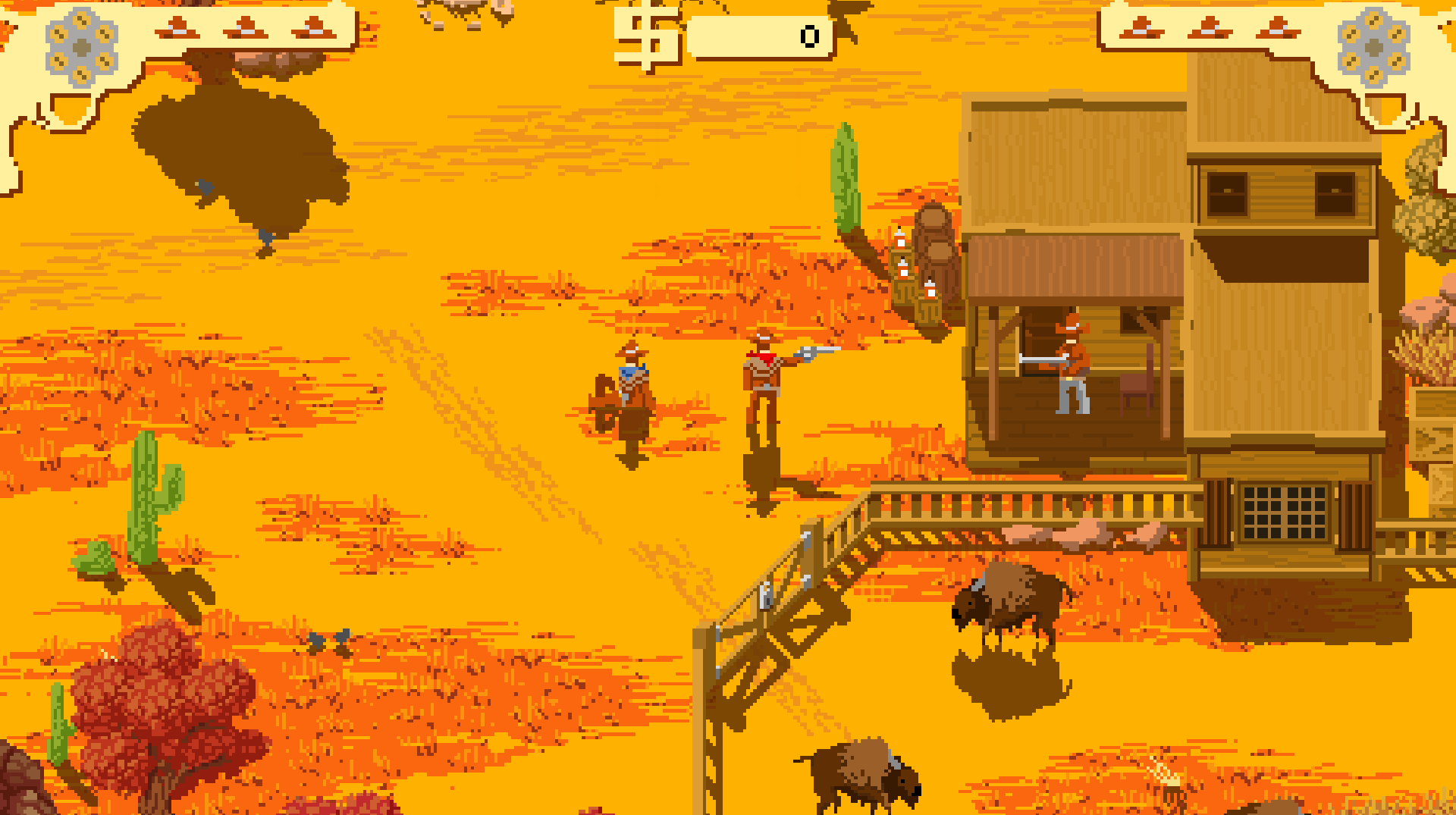
Speaking of shooting, the game offers a very unique take on the good ol’ video game gunfight. For starters, it begins very deliberately. Going from conversation to shootout requires a full three button sequence: once to draw your weapon, once to cock it, and another to shoot. The benefits of this design choice are twofold. First, it gives the moments between drawing and cocking your weapon a classic tenseness. Second, it lets the player feel legitimately quick when they’re able to pull off the entire sequence before their opponent. Once the guns are drawn and the bullets are firing, however, the game delves into well-crafted chaos. See, the player can only fire horizontally. As you might imagine, this means that latter stages of a gunfight are more about ducking and weaving around the environment to obtain an advantageous position on your opponent. When gunfights contain more than a couple combatants (which they frequently do), they devolve into sheer bedlam. It may not be up everyone’s alley, but I absolutely loved going into a gunfight without really knowing the outcome, making the decision to engage even tougher.
Where the game glows for me is in the sublayer mentioned above. While the characters aren’t much to write home about, often serving as little more than clue vendors, the environment is steeped in wondrous implications. It’s a well-balanced mixture of both expanses and landmarks, each offering slight hints as to how they came to be. There’s a great deal to explore here, and just enough to find to keep one’s curiosity piqued. Like the game itself, the soundtrack’s ability to create something resonant out of very little cannot be overstated. It’s the perfect complement to the game’s aesthetic and, as a result of this pairing, I often found myself leisurely walking through certain screens, simply to give myself a little more time to drink it all in.
.png)
Of course, the reason you’re reading a review on Co-optimus is to get a feel for a game’s co-op modes. I haven’t mentioned it much up to this point, and there’s a reason for that. The local two player co-op mode, while highly competent, offers little more than an excuse to drag a friend along in your explorations. This is not at all a bad thing, mind. I’d take any chance I could get to take a pal on a brief Westerado tour. In terms of agency, the second player can only interact with the world in one way: bullets (admittedly, this is kinda huge). Otherwise, they cannot speak with NPCs, purchase items, or even play poker. Until any of the three bonus characters are unlocked, the second player doesn’t even look very dissimilar from the hero. I would’ve loved to have seen a little more depth here, which honestly could’ve pushed Westerado into Game of the Year territory, but it’s understandable given the budgetary restrictions that I assume come with porting a flash game.
At its core, Westerado is a parody. It spends most of its time poking fun at typical genre tropes, but with every joke comes a sense of love and respect. It’s my understanding that the best form of parody comes from those who can engage with a topic at its very core. It’s my opinion that developer Ostrich Banditos has this relationship with Westerns. It speaks to the game’s strengths that I wish it were much longer and much deeper, but that doesn’t diminish its accomplishments. A slightly shallow co-op mode should not dissuade you from taking a friend along for the ride in Westerado to see both what is there, and what isn’t.
Verdict
Co-Op Score
Overall
The Co-Op Experience: A pair of desperadoes hunt for clues and gun down outlaws in a local-only co-op mode.
Co-Optimus game reviews focus on the cooperative experience of a game, our final score graphic represents this experience along with an average score for the game overall. For an explanation of our scores please check our Review Score Explanation Guide.